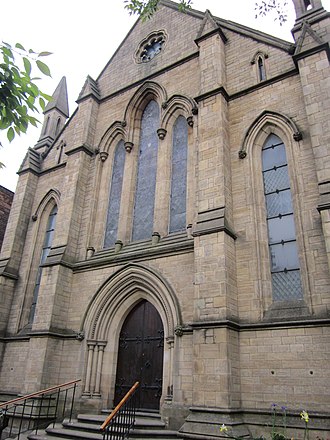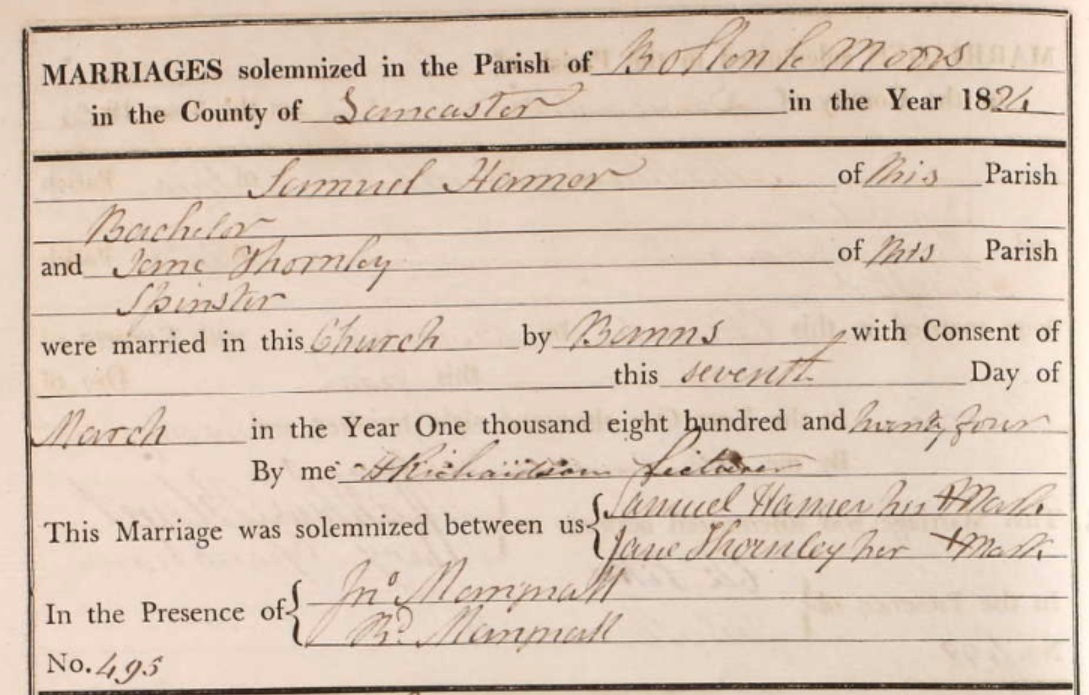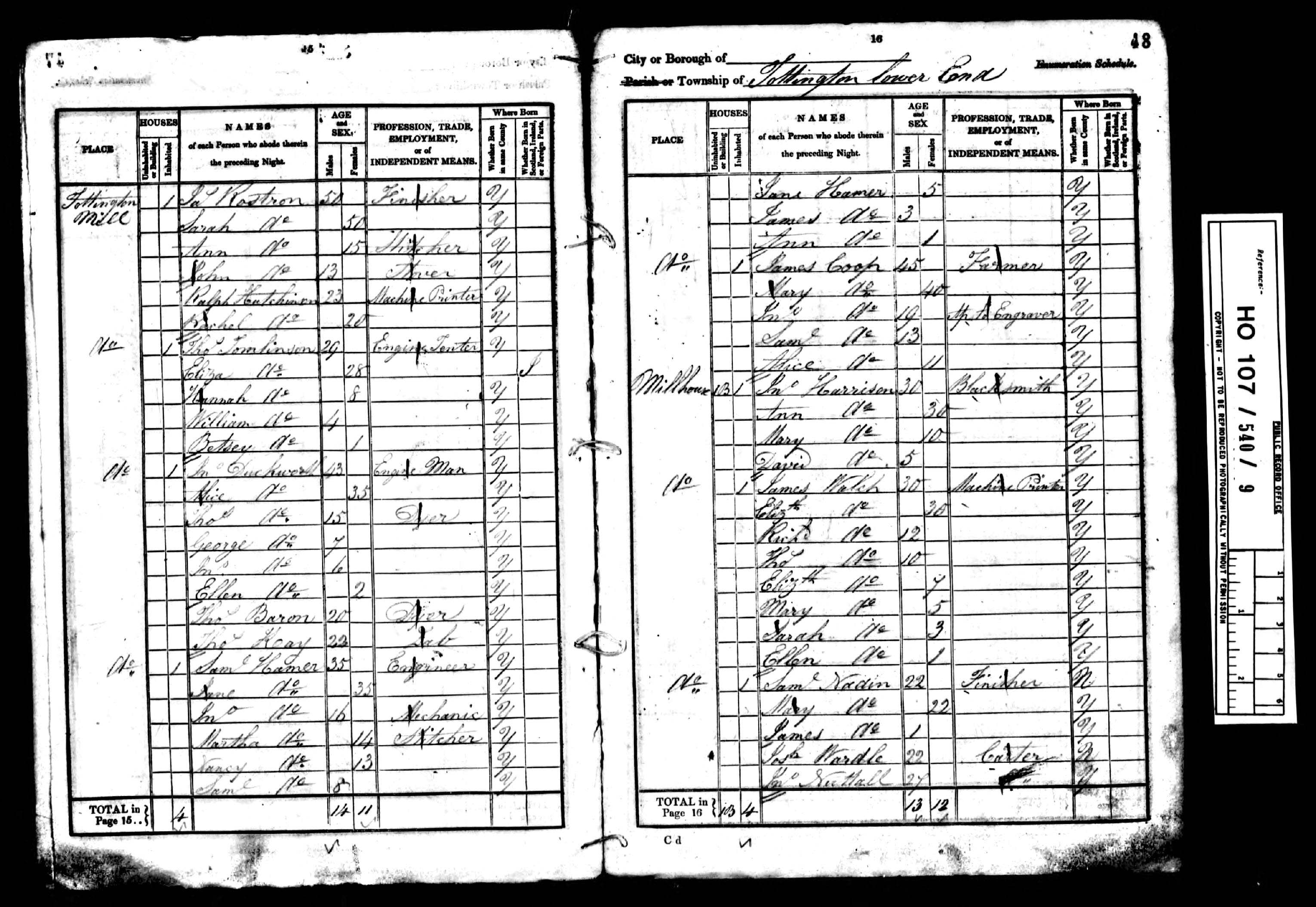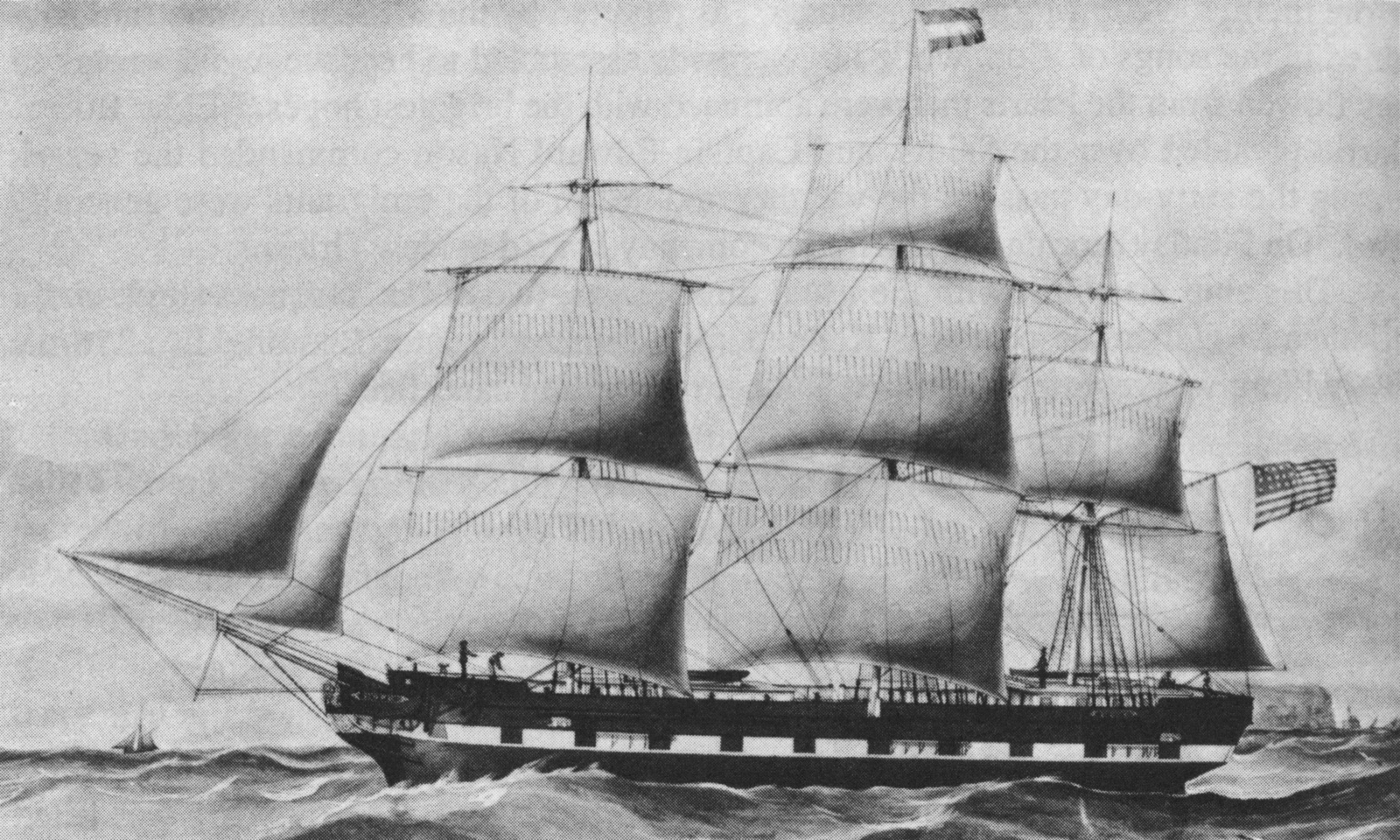SAMUEL HAMER

Christening record for Samuel Hamer at Bank Street Presbyterian Church, Bolton
The
same records also show three younger brothers:
James, John, and Edward. “The date 1672 in
generally accepted for the foundation of the
Bank Street Chapel congregation. The
founding families were intermarried and
resided almost entirely in the better areas
to the south of the town...The growth of the
town of Bolton was based on the textile
industry, and Bank Street Chapel
congregation represented an influential
section of the local population occupied at
all levels in the industry, commerce, and in
the professions.” A Responsible
Society; G.M. Ramsden

Bank Street Chapel
Samuel and Jane
Thornley were married 7 March 1824 in Bolton
le Moors. Samuel worked as an engineer, fixing
and maintaining machinery, and also as a
millwright.

Marriage record for Samuel Hamer and Jane Thornley in Bolton
Ten children were born to them in England -
John, Martha, Nancy, Ellen, James, Samuel,
Jane, James, Ann, and Joseph. In 1835, the
family moved to Tottington
(about four miles north of Bolton), and it
must have been here that they were converted
to the gospel. The British Mission opened in
Preston in 1838, and spread to the nearby
countryside: "Members of the Council of
the Twelve who served missions to England in
1840-41 found the specific prophecies of
Joseph Smith upon their heads were
fulfilled. Their experience was like that of
the early Apostles on the day of Pentecost
as thousands recognized their message and
authority and asked them what they should do
to be saved." (Ensign, July 1987).
According to the History of the Church,
in 1840 there was a branch of sixty members in
nearby Bolton. It is not known when Samuel and
Jane were baptized, but their son John was
baptized in September of 1840 by Robert Crook.
John was 16 years old. Samuel was an
officiator at a baptism for Sarah Singleton on
23 November 1841, so he must have been
baptized before that date.

The Hamer family
appears in the English census in Tottington
Mill in 1841. The record shows:
Saml Hamer, 35, Engineer

The Hamers immigrated to the United States in February of 1842 on the ship Hope. The passenger list for the Hope shows:
Martha Hamer, age 14
Listed separately:
Joseph Hamer, infant, origin England

The Ship Hope
The Hope
sailed from Liverpool on 5 February 1842,
under Captain Soule. There were 270 LDS
immigrants. The LDS leader was James Burnham.
The voyage was described in several journals:
"She got out of dock on Friday 3rd Feb. and
she was towed down the river on Saturday
morning by a steamer about 8 miles and on
Sunday morning we passed the land of
Ireland...We saw a number of fish called
porpoises, and on Wednesday 8th we had a
strong head wind, and Thursday 9th it blew a
strong gale of wind...Wednesday the 2 March
the same as yesterday. I saw one flying fish
today and one yesterday. Saw a vessel at a
great distance we thought making for
England. 30 March Wednesday morning the
steam boat Star arrived and
took us in tow about 9 o'clock in the
morning...and took us in tow up the great
Mississippi River and when we got up the
river some distance on Thursday morning the
31 March we came in sight of a most
beautiful country diversified with
plantations farm house, sugar manufactories,
and beautiful cottages and wooded on each
side of the river and on 1st April we got to
New Orleans and safe and sound and on the
second April we chartered a steam boat Louisa
commanded by Captain H.C. Cable to St.
Louis." (Richard Rushton)
The company of Saints
traveled up the Mississippi and joined the
Saints at Nauvoo. The ship arrived on 1
April 1842. The History of Joseph Smith
records: "About one hundred and fifty
Saints from England, landed in Nauvoo from
the steamer Louisa, and about sixty from the
steamer Amaranth."
Nauvoo
in 1840 had a population of 2,450. The call to
gather brought many hundreds of English
immigrants like the Hamers: "One of the
assignments given the Council of the Twelve
in Nauvoo was the resettlement of British
immigrants. The Twelve helped newcomers find
homes and land, employment, and temporary
sustenance when needed. So, to serve the
steady influx of Missouri and British
Saints, surveyors in Nauvoo laid out a plat
of four-acre blocks, each divided into four
plots. Upon the city lots were many small
log homes, some frame and stone buildings."
(Ensign, Sept. 1979). The Hamers were
given Lot #74, a few blocks from the Nauvoo
Temple site, towards the river. (One of the
Hamer's next-door neighbors, Sarah Granger
Kimball, was responsible for starting the
charitable women's organization that became
the Relief Society. Her house is still
standing, and is part of the Nauvoo
restoration site tour.) Samuel is found paying
taxes in 1842 in the Nauvoo, Illinois Tax
Index, 1842:
Samuel Hamary, page
226, coordinates 6N8W
Source: Nauvoo, Illinois Tax Index, 1842,
on ancestry.com.

This map shows the location of Samuel
Hamer's property, Lot #74 in Nauvoo.
It is at the corner of Young and Bain
Streets in Nauvoo.
The Nauvoo Temple can be seen from the
lot, and is located at Lot #20.
Samuel worked in
Nauvoo as a blacksmith. The one-year-old baby,
Joseph, died in September of 1842. He is
believed to have been buried on the Hamer's
property.
There is some
confusion about Samuel Hamer's death. The
newspaper, the Nauvoo Neighbor, records the
death of Samuel Hamer in August 1843 of "ague
and fever"- probably malaria. The death
is confirmed by the handwritten Sexton's list
of death. However, there is an interesting
family story, as told by Samuel's
granddaughter, Nellie Hamer Reiser (the
daughter of Samuel Hamer, Jr.): "I
remember having heard my father tell many
stories of his experiences as an early
member of the Church and as a pioneer. He
told us of having seen the Prophet Joseph
Smith lying on the well curb after having
been killed and having fallen from the
window of the Carthage Jail. Father had gone
with his father and mother to see where the
Prophet was imprisoned, and arrived just
after his cruel death. His father, who was
the only miller that the Saints had at that
time, and suffered for some time with a weak
heart. He took his wife and his boy home,
and had no sooner reached the house than he
fell dead. The shock of the Prophet's murder
was too great for him to stand." This
story is unlikely. If it were true his death
would have had to have been in June of 1844,
instead of August 1843 as recorded. Samuel
Hamer, Sr. is not recorded as being buried in
the old Nauvoo cemetery, but is probably
buried on his property in Nauvoo, which
according to the Nauvoo Restoration Society is
now pasture land. This pasture land is owned
by the LDS church, as part of the Nauvoo
restoration.

Nauvoo Neighbor, death notice for Samuel Hamer
Samuel’s widowed wife and family were driven
from Nauvoo by the mobs in 1846. They were
heartbroken to leave Samuel and Joseph’s
graves behind as they crossed the plains.
Samuel gave his life for his testimony, and
the impact his life and death is reflected in
the lives of his descendants.

This plaque at the Nauvoo Pioneer
Cemetery
remembers those who died in Nauvoo.

“And should we die before our
journey’s through
Happy day, all is well.
We then are free, from toil and sorrow,
too
With the just we shall dwell.”
This rose was left in remembrance by a
grateful descendant
on the property Samuel Hamer owned in
Nauvoo.